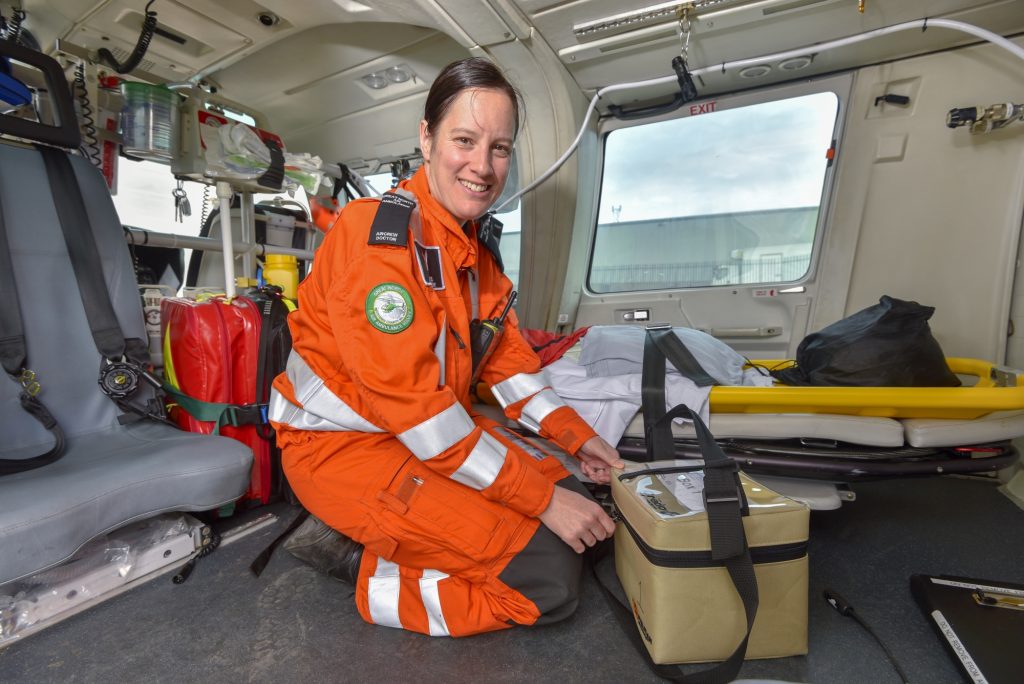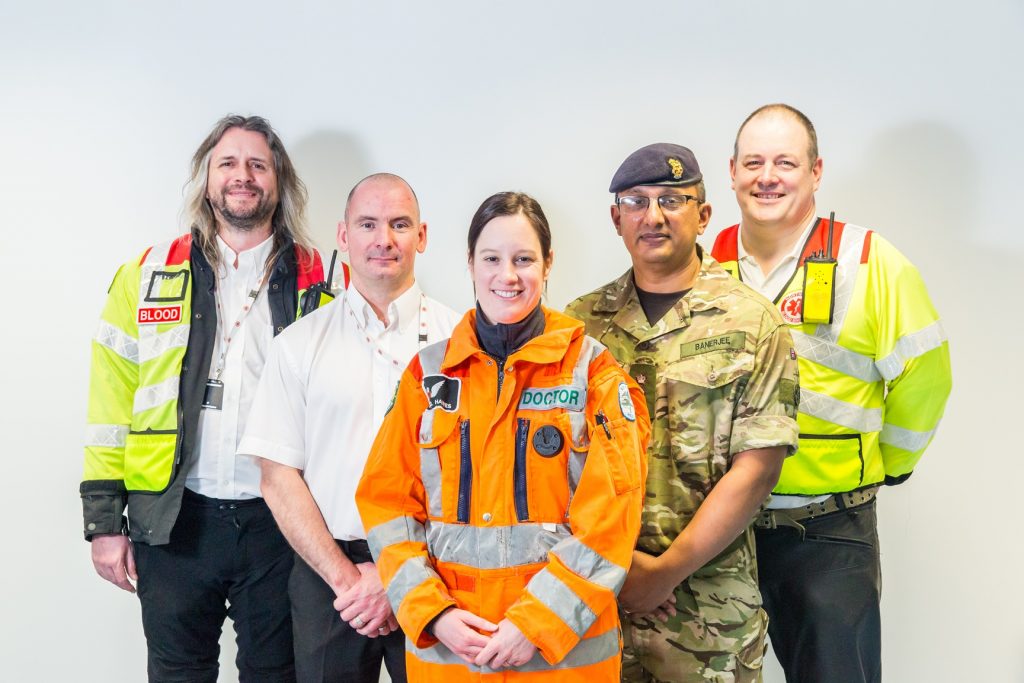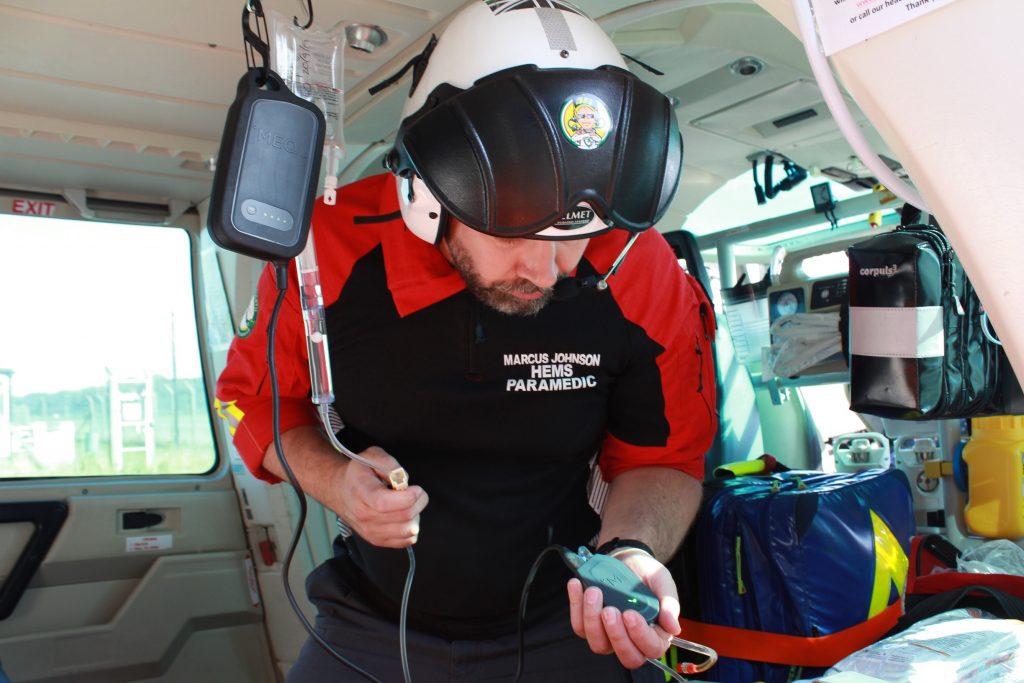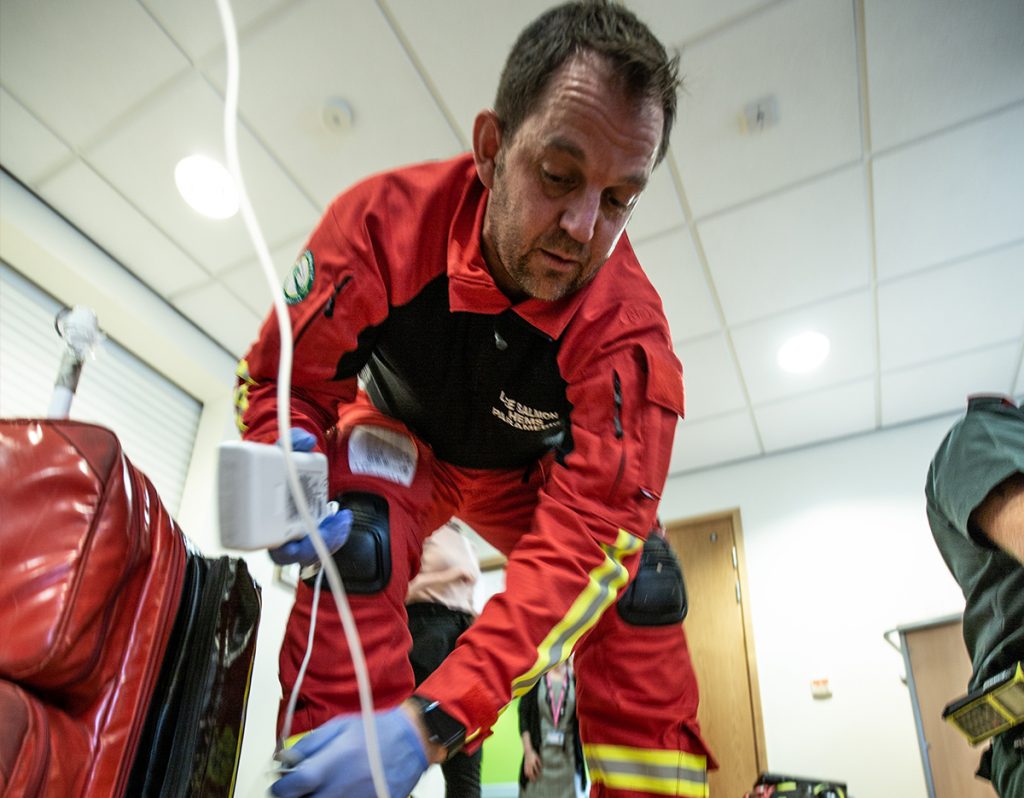A new research trial has started at the Great North Air Ambulance Service (GNAAS) to explore new treatments for bleeding trauma patients.
The two-year SWIFT (Study of Whole Blood in Frontline Trauma) trial involves nine other air ambulances in the United Kingdom and the project is led by NHS Blood and Transplant in partnership with the Ministry of Defence.
The trial will compare outcomes between those who receive red blood cells and plasma transfusions versus those patients who receive whole blood.
The aim is to identify if this new treatment reduces patient deaths at 24 hours after injury or the need for further blood transfusions once in hospital.


Air ambulance services across the country attend incidents in their regions to treat patients who are severely injured or unwell.
Currently, when a patient needs a blood transfusion on the scene of an incident, they will receive two units of red blood cells and two units of fresh frozen plasma (FFP).
This study will look at whether giving patients whole blood rather than red blood cells and FFP will not only help to save more lives but be more cost-effective in the long run.


Whole blood is where all the components of blood such as red blood cells, plasma, and platelets are in one bag rather than separated, which is standard practice in the UK.
GNAAS doctor, Rachel Hawes, received an OBE for her work with GNAAS and the Newcastle Hospitals, in getting blood transfusions to critically ill patients in time to save their lives.
Dr Hawes OBE came up with the life-saving “Blood on Board” service back in 2015 after serving in Afghanistan as a trauma anaesthetist and decided to transfer the skills to civilian life.
Dr Hawes said: “We’re really looking forward to seeing the results of the trial and building on previous research into red blood and plasma and collaborating with other air ambulances to improve patient care.
“All blood products need to be kept at a safe temperature, but FFP only has a shelf life of five days and then has to be discarded if unused. Whole blood has a longer shelf life and can be returned to the fridge if unused, which reduces wastage and is important for air ambulances as outside the hospital setting access to fridges and freezers is more limited.”


Dr Hawes OBE continued: “The idea is that over the two-year trial period, 50% of patients receive standard care using the two units of red blood cells and two unit of FFP and 50% will receive whole blood. At the end of the trial, we can see what has worked best.”


She added: “The storage characteristics and administering of whole blood remains the same as our current methods so all clinicians are already fully-trained, meaning very little change to our current set up.”
Become a GNAAS volunteer
Dedicate a few hours to our cause and make a big difference to lives across the region
Find out more



